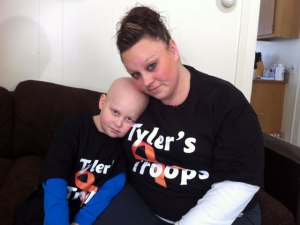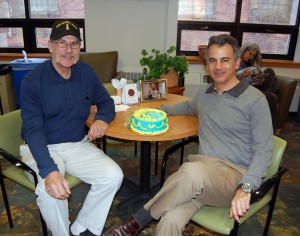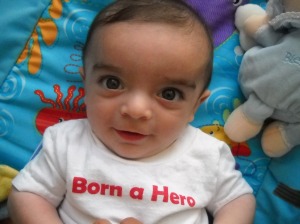College athletes throughout Rhode Island are learning that winning doesn’t always come on the playing field. It’s often in real- life situations, where their actions are translating into saved lives.
 “It is important that young people realize how blessed they are and that not everyone is as fortunate as them,” says University of Rhode Island football coach Joe Trainer, whose football team is among 40 nationally involved in a marrow registration program. “Getting an opportunity to save a life will impact them long after their playing days are over.”
“It is important that young people realize how blessed they are and that not everyone is as fortunate as them,” says University of Rhode Island football coach Joe Trainer, whose football team is among 40 nationally involved in a marrow registration program. “Getting an opportunity to save a life will impact them long after their playing days are over.”
URI, Brown and Salve Regina Universities are currently hosting marrow drives regularly, and Bryant University will become the fourth Rhode Island school to join the program when it hosts a marrow drive in the spring.
Caroline Casey, a University of Rhode Island volleyball player, recruited from a Maryland High School to play for the Rams, epitomizes exactly what Coach Trainer is trying to convey. “I have a healthy body that allows me to play volleyball,” says Caroline, who several weeks ago became the 10th athlete or coach from URI’s football team sponsored marrow drives to donate life saving marrow.
The three football programs have accounted for nearly 2,500 marrow registrations, and 14 life saving marrow matches. URI has held five drives, registering 1,181 individuals; Brown has held four drives, registering 1,024; and Salve Regina has held two drives, registering 257. Both Brown and Salve have each had two matches that have come from their programs.
Brown coach Philip Estes believes the marrow registration programs are not only saving lives, but are a “great way to team build and create leadership roles within the program. “Our football program has always had a strong sense of giving back,” he says. “We take a great deal of pride in having the opportunity to help our community. We have had many in our football family affected by different medical problems, and we as a team want to be proactive in helping those in need.”
“It brings the team closer together,” says Salve football coach Kevin Gilmartin. “It brings everything closer together. You realize what’s important. This is something that you are just giving of yourself. Our players are motivated because they believe in it.”
 The national program started more than 20 years ago at Villanova University, after football coach Andy Talley heard a radio program that promoted the dire need for marrow donors. After hearing the radio program, he started the marrow program with his football team, and three years ago started a foundation to raise money to cover costs for marrow testing. (In Rhode Island there is no cost to those between 18 and 44 registering for the Be The Match marrow program. By law the cost is covered by health care insurance, and for those without insurance Michael’s Fund of Fall River picks up the cost).
The national program started more than 20 years ago at Villanova University, after football coach Andy Talley heard a radio program that promoted the dire need for marrow donors. After hearing the radio program, he started the marrow program with his football team, and three years ago started a foundation to raise money to cover costs for marrow testing. (In Rhode Island there is no cost to those between 18 and 44 registering for the Be The Match marrow program. By law the cost is covered by health care insurance, and for those without insurance Michael’s Fund of Fall River picks up the cost).
For Caroline, like the athletes and coaches before, donating marrow was an interruption in what had been a successful season. For her recipient, a 32-year-old woman, it was life itself. A junior who is on an athletic , Caroline registered for the marrow program as a freshman, knowing that her chances of becoming a match were slim.
“When I got the call I was a match, I was excited and nervous to tell the coach,” she says.
But a visit from the athletic director and Coach Trainer encouraging her to donate, gave her the confidence to move forward. Her sacrifice was to miss a week of practice and games against Duquesne and Dayton. For the team, number 32, the age of the recipient, became a rallying point. “We made her our number 32,” Caroline says. “We played for her, used her to motivate the team.”
Caroline, whose major is kinesiology, won’t meet number 32 for at least a year, which is the period of time that the Be The Match program requires before arranging a meeting of donor and recipient. Donating marrow has brought things into perspective for her. “It’s helped me be more thankful.”
One of five children, her family has been committed to blood donation, at some level, for several years, and is intent on giving back. Caroline will soon be making her second trip to an orphanage in Nicaragua for several days helping kids with mental and physical disabilities that were abandoned by their parents.
Reflecting on her donation experience, she says: “How simple it is to save someone’s life, a week of shots and a day of having your blood drawn. It’s not a big sacrifice.”
Article written by Frank Prosnitz; Community Manager, Rhode Island Blood Center. Frank is also the Editor of The Community Lifeline. This article first appeared in the Community Lifeline, December 2013, Volume 12, No 4.









 During childbirth, Heather had suffered an internal laceration, losing considerable
During childbirth, Heather had suffered an internal laceration, losing considerable  e the rest room, “I felt like I was going to pass out. I remember blacking out and waking up with doctors and nurses everywhere,” she said. In the hours and days after, she used 13 units of red cells, 18 units of platelets and six units of plasma. She spent her initial hours in the hospital’s
e the rest room, “I felt like I was going to pass out. I remember blacking out and waking up with doctors and nurses everywhere,” she said. In the hours and days after, she used 13 units of red cells, 18 units of platelets and six units of plasma. She spent her initial hours in the hospital’s 








 In January, I went into labor and made sure to grab the special box along with my hospital bag. All that was needed was a simple painless
In January, I went into labor and made sure to grab the special box along with my hospital bag. All that was needed was a simple painless 
